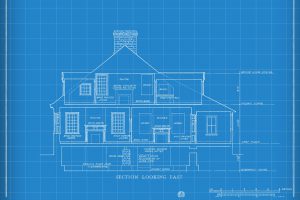Buying an apartment is an expensive endeavor—so expensive, in fact, that the mortgage system was developed long ago to help buyers finance their home purchase. Under this system, a mortgage bank provides financial assistance, and buyers repay the loan in installments spread over a long period.
However, no mortgage bank currently offers a loan covering 100% of the property’s value. All banks, without exception, require buyers to provide their own equity.
So how is it that some buyers still manage to secure financing equivalent to 100% of the property’s value?
The core idea behind a mortgage — that is, the assistance banks provide for purchasing apartments — is that buying a property solely with your own equity is too expensive.
In the past, mortgage banks offered loans covering up to 50% of the property’s value, enabling buyers to raise the necessary equity to complete the purchase.
However, as property prices increased, so did the portion buyers had to present to the mortgage bank as equity.
As a result, laws changed, and today mortgage banks allow loans up to 70% of the property’s value.
But property prices kept rising, and even 30% equity is often more than many people can provide.
Therefore, many seek ways to circumvent the law and obtain full financing for the property, which is possible through several methods.
Opposite the mortgage bank stands the commercial bank, which also grants loans.
However, loans from commercial banks differ fundamentally from mortgages — they are usually smaller, have higher interest rates, and importantly, can be used for any purpose.
Because these loans are smaller and more expensive, it is not advisable to take a commercial bank loan for a large amount like a real estate purchase, but there is another method to combine both banks to achieve full financing.
To do this, you take a loan from the commercial bank for the equity amount required for the mortgage.
In most cases, there is no communication between the commercial bank and the mortgage bank — and even when there is, they are not overly concerned about the double loan.
Thus, it is possible to take out both loans without interference, achieving full financing for the apartment.
In addition to commercial bank loans, there are other sources for equity loans that may even help reduce repayment costs:
Another solution for financing the required equity for a mortgage is using a second mortgage.
This is possible for someone who already owns a property, or someone who can help and owns a property, like family members or parents.
To do this, you apply to the mortgage bank for a mortgage on the existing property.
With the mortgage amount received, you can finance the equity needed for the mortgage on the new property.
Unlike the previous case, here there may be a direct connection between the two loans since both might be taken from the same mortgage bank.
Still, it is unlikely the bank will object since both properties are collateralized to the bank.
If needed, the property values cover the repayments, minimizing the bank’s risk.
Although for many people buying a property with 100% financing might be the only way to purchase a home, it doesn’t mean it should be the preferred route.
Full financing methods carry high risks due to the use of two or more separate loans.
Someone who doesn’t fully understand the process will need a lot of luck to avoid getting tangled in the repayments.
The main risks and challenges that may harm buyers who obtain 100% financing are:
For those willing to take the risk of borrowing 100% of the property’s value, it is wise — and advisable to consult an expert — to consider these key points:
This is because with 100% financing, the borrower is far more vulnerable to property value declines, and because it might be possible to avoid needing full financing if property values are expected to fall.
 What are the buyers looking for in the next property you’re going to sell?
What are the buyers looking for in the next property you’re going to sell?
 How the Dollar Value Impacts Real Estate
How the Dollar Value Impacts Real Estate
 Capital Gains Tax Discounts and Purchase Tax Reductions in 2025 (Also for Investors)
Capital Gains Tax Discounts and Purchase Tax Reductions in 2025 (Also for Investors)
 Rules and Considerations When Examining Boundaries and Plot Demarcation
Rules and Considerations When Examining Boundaries and Plot Demarcation
 Should You Invest in a TAMA 38 Investment Fund?
Should You Invest in a TAMA 38 Investment Fund?
 Contractor from Birth – The Complete Guide to Building a Private House
Contractor from Birth – The Complete Guide to Building a Private House